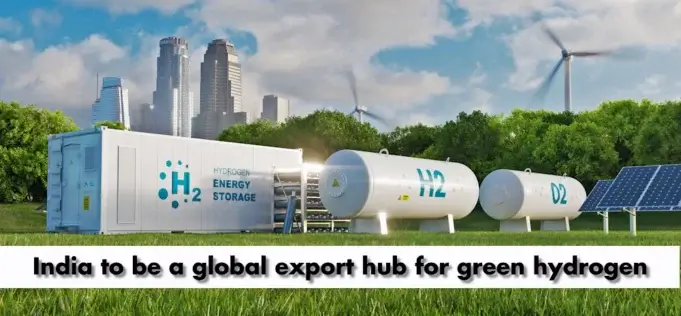India, currently the world’s third-largest economy in terms of energy needs, is projected to witness a 35% surge in energy demand by 2030. To avoid a soaring energy import bill, which reached $185 billion in 2022, and to align with its net zero goals, India targets 5 MMTPA of green hydrogen production by 2030 (in addition to other energy transition pathways).
By 2030, using green hydrogen for half of the country’s hydrogen needs could cut 50 million metric tons of greenhouse gases and lessen reliance on energy imports. The latest report titled Green Hydrogen: Enabling Measures Roadmap for Adoption in India, released today by The World Economic Forum in collaboration with Bain & Company, covers the potential, opportunities, and roadmap to accelerate the offtake of green hydrogen adoption in India, as well as capitalize on its export potential.
“With affordable renewable energy, India can attract valuable international trade of green hydrogen derivatives. To boost the country’s export potential, it is crucial to establish recognized standards, improve export infrastructure, and form strategic partnerships. While becoming a leading exporter offers economic advantages, competition is expected with countries like the USA (driven by the Inflation Reduction Act), Australia, Middle East, and South America, owning to their lower production costs.”, said Sachin Kotak, Partner and a leading member of our Energy and Natural Resources practice, Bain and Company.
For India’s 2070 net-zero goal, green hydrogen is vital for meeting energy security needs and reducing emissions in hard-to-abate sectors. The key measures to accelerate a green hydrogen ecosystem on the supply side include achieving cost-parity with grey hydrogen in production and delivery, while on the demand side, it involves supporting industries for green hydrogen consumption in the short term and discouraging carbon-intensive alternatives in the long term.
Currently, green hydrogen production in India costs around $4–5/kg, roughly double that of grey hydrogen. To achieve widespread adoption, green hydrogen needs to reach a net price of $2/kg or lower. The main cost drivers are round-the-clock renewable energy (RTC RE) costs (50%–70%) and electrolyser costs (30%–50%). Storage accounts for 30%–40% of total RTC RE costs as green hydrogen production requires a steady source of energy, which requires storage systems like batteries and pumped hydro. While India is known as a leading low-cost RE producer, storage facilities are not at scale, and their costs are considerably higher. Subsequently, the costs of electrolyser technology can be reduced through innovation and increased scale. To promote wider adoption, providing direct subsidies to early adopters, offering incentives and cost waivers on transmission and storage costs, and supporting the R&D of domestic electrolyser technology are some of the key initiatives that can contribute to its scalability.
Green hydrogen requires dedicated and sometimes adjusted infrastructure for storage and transportation, which can be costly, especially when the scale is low. Hence, in the near term, green hydrogen will see much higher adoption in industrial clusters. Encouraging the formation of hydrogen-based industrial clusters and incentivizing the same will help accelerate green hydrogen, similar to establishing Special Economic Zones developed to promote industrial/business activities.
In addition to supply-side interventions, on the demand side, industries can be encouraged to consume green hydrogen rather than fossil-fuel-based energy sources. Targeted incentives are crucial to drive domestic demand, especially among the leading consumers of existing grey hydrogen, such as refineries and ammonia, which account for over 90% of the country’s total hydrogen demand. To support their transition, stakeholders must increase direct subsidies, effectively reducing green hydrogen costs in the short term and stimulating long-term demand for this new energy source. This is akin to the way the government supported the growth and adoption of RE in India over the last decade, until the cost curves evolved, and scale was attained, making RE competitive with thermal energy. The next wave of users that are likely to drive the adoption of green hydrogen throughout India include green transportation providers, steel, cement, chemicals industries, and power, among others. Expanding the use of green hydrogen could thereby provide a credible pathway for India to achieve its decarbonisation goals, while also addressing energy access and security concerns.
To drive a sustainable future in India, a dual strategy of incentivizing green hydrogen adoption and discouraging carbon-intensive energy sources is critical. Funding the green transition could involve redirecting subsidies from high-emission sources while ensuring basic energy needs are met and making green energies more economically viable.
For India to excel in the global green hydrogen sector, collaboration among the central and state governments, industry, and academia is crucial. This joint effort will spur necessary changes and innovations in this emerging energy technology.











